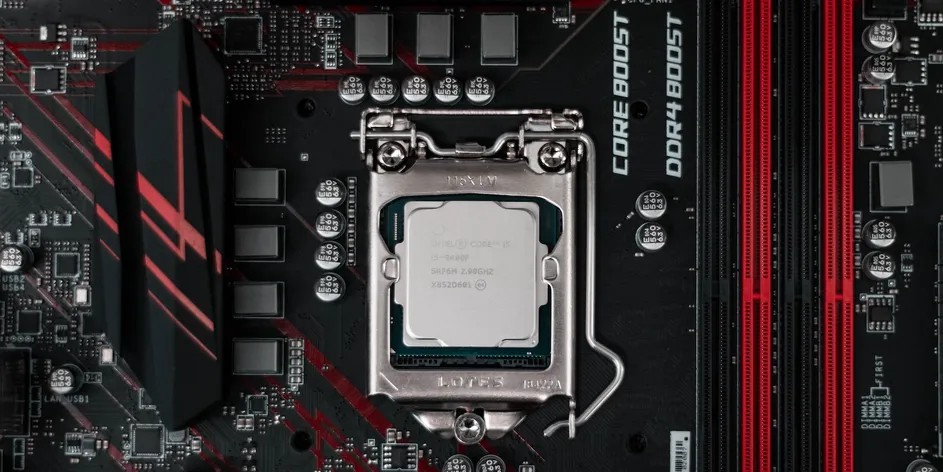When adjusting the CPU core ratio in your BIOS settings to overclock your processor, you might come across another setting called CPU ring ratio. Since it’s located in the same overclocking settings, you may wonder if changing this ratio can improve overclocking performance.
But what exactly is the CPU ring ratio, and can it enhance performance during overclocking?
Understanding Overclocking
Before delving into CPU ring ratios and their effects, it’s important to grasp what happens when you overclock your CPU.
As the name suggests, overclocking involves increasing the clock frequency of the CPU. But what does this clock frequency mean, and why is it necessary?
The CPU executes various tasks while running applications like word processors and games. Although these applications may appear complex, the CPU primarily performs simple operations such as addition, subtraction, and data manipulation to run them.
To carry out these tasks, the CPU relies on millions of tiny switches called transistors. These switches need to work in synchronization to perform operations, and the clock frequency plays a vital role in maintaining this synchronization.
In essence, the clock frequency determines the rate at which the CPU performs tasks, and overclocking raises this rate, enabling the CPU to process more instructions per second. Consequently, overclocking boosts the CPU’s overall performance by increasing its processing speed.

Understanding the Data Path to the CPU
Now that we have a grasp of the CPU’s clock frequency and the impact of overclocking, let’s explore how data reaches the CPU.
It’s crucial to understand this data flow because simply increasing the CPU’s processing rate won’t yield any performance improvement if the system fails to deliver data at that accelerated pace. In such cases, the CPU would remain idle, waiting for data to be delivered.
Explaining the Memory Hierarchy in Computer Systems Data in a computer is stored in the hard drive, but the CPU cannot directly access this data. The primary reason for this is that the hard drive’s speed falls short of the CPU’s requirements.
To address this limitation, computer systems employ a memory hierarchy that facilitates rapid data delivery to the CPU.
Here’s an overview of how data moves through the memory systems in a modern computer:
- Storage Drives (Secondary Memory): These drives, such as hard disk drives (HDDs) or solid-state drives (SSDs), store data permanently. However, they are slower compared to the CPU. As a result, the CPU cannot directly access data from the secondary storage system.
- RAM (Primary Memory): RAM, also known as random-access memory, is faster than secondary storage but cannot retain data permanently. When you open a file on your system, it is transferred from the storage drive to the RAM. Nevertheless, even the RAM’s speed falls short of meeting the CPU’s demands.
- Cache (Primary Memory): To achieve the highest possible data access speed, CPUs incorporate a specialized type of primary memory known as cache memory. This memory system is embedded within the CPU and is the fastest memory component in a computer. It consists of three levels: L1, L2, and L3 cache. The L1 and L2 caches are dedicated to individual CPU cores, while the L3 cache is shared among the cores and resides on the CPU die.
Consequently, any data that requires processing by the CPU traverses a path from the storage drive to the RAM and finally reaches the cache.
But how exactly does data move from these different mediums to reach the CPU?

Understanding the Memory Controller and Ring Interconnect
Within a computer, the various memory systems are connected through data buses, which facilitate the transfer of data between these systems.
For instance, the RAM is connected to the CPU through a data bus integrated into the motherboard. The memory controller, located within the CPU, manages this data bus. Its primary function is to fetch the data required by the CPU from the RAM. To achieve this, the memory controller sends read/write commands to the RAM, which then transmits the data over the data bus back to the memory controller.
Once the data reaches the memory controller, it needs to be transferred to the CPU. This task is accomplished through the use of the ring interconnect, which establishes a connection between the CPU cores, the L3 cache, and the memory controller. Essentially, the ring interconnect acts as a data highway, facilitating the movement of data between the cores, L3 cache, and memory controller.
Impact of Increasing the CPU Ring Ratio
The ring interconnect operates at a specific clock frequency, just like the CPU itself. Data on the ring bus travels at specific intervals defined by this clock frequency. By increasing the frequency of the ring interconnect, the rate at which data moves from the L3 cache to the CPU cores is enhanced.
Consequently, increasing the CPU ring ratio results in a higher rate of data transfer from the L3 cache to the CPU cores, leading to improved performance.

The Relationship Between CPU Ring Ratio and Overclocking Performance
When you manually overclock the CPU by increasing its clock frequency, the processing speed of the CPU cores also increases. However, if the CPU ring ratio remains unchanged, the speed of the ring bus responsible for delivering data to the cores remains the same, causing a performance bottleneck. To overcome this bottleneck, increasing the CPU ring ratio becomes crucial. Doing so enhances the performance during overclocking by ensuring a faster delivery of data from the L3 cache to the CPU cores.


